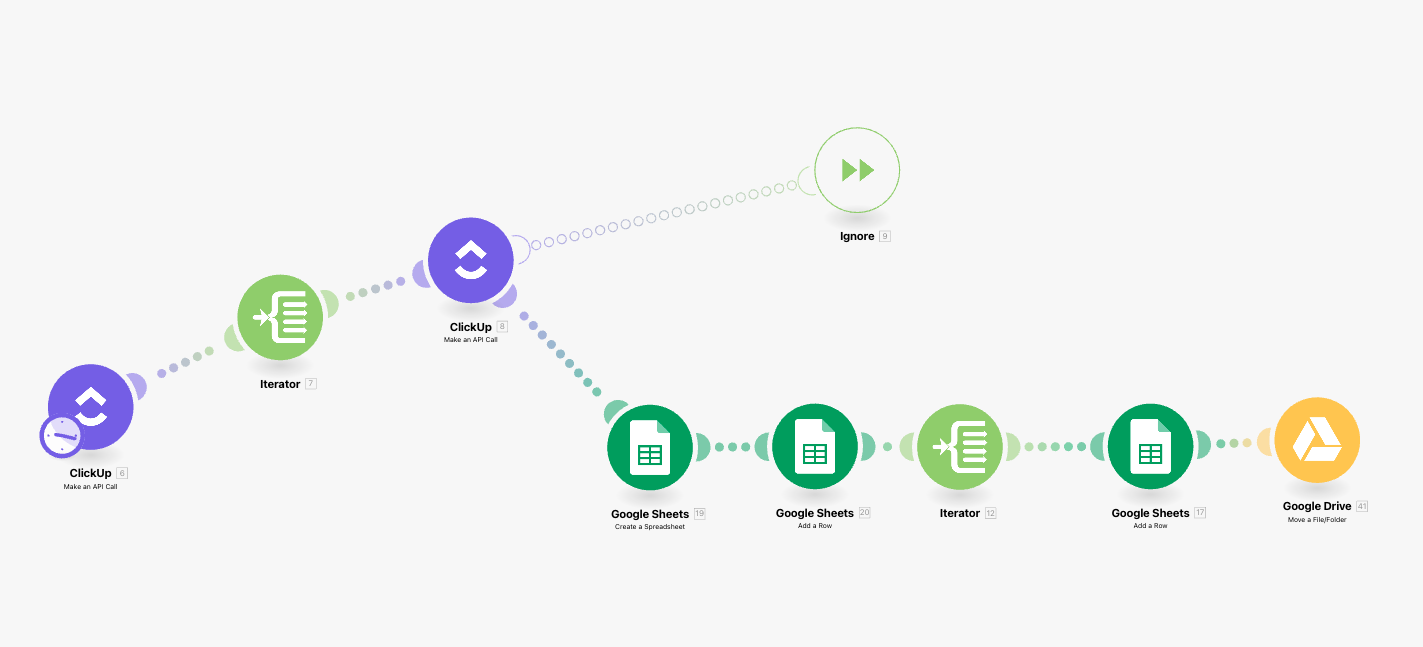Automation and integration offers a lifeline for over-encumbered teaching and support staff, allowing them to concentrate on what’s important - offering the highest quality educational experience.
Driving school efficiency with integration and automation
It’s been a tumultuous few years for schools.
Through navigating the global pandemic, to the current cost of living crisis here in the UK, schools are having to continually evolve to continue to defy the odds to provide a high quality educational experience for their pupils.
Along with the sector’s evolution has come an increased dependence on technology, especially so with virtual school experiences such as; online learning, virtual campus tours and online shops.
But it’s not just the learning experience that can benefit from leveraging technology.
Schools can harness the power of integration and automation to automate repetitive processes, alleviating some of the pressure on administrative responsibilities and improving overall efficiency.
This blog post outlines how the website can integrate with different parts of the wider school to save time, money and boost performance.
What are the benefits of automation for your school?
Historic and laborious manual processes demand a lot of time and energy behind the scenes.
Whilst integrating new software, or automating a task will require an initial investment, in time and potentially cost, the result will often have a long-lasting impact on your school’s workflows.
Looking at the bigger picture, there are a plethora of benefits that integrations and automation for your school provide, such as:
- Saves time and money – Automation significantly reduces the time and man-power needed for laborious tasks, and can reduce costs on materials, which can be allocated elsewhere.
- Boosts performance and staff morale – When manual tasks are automated, educational professionals will have more time to apply to more important tasks, and will hopefully benefit from the alleviation of stress of cumbersome support tasks.
- Enhances data security – By retaining data within GDPR compliant systems that have stringent security protocols in place, keeping data protected and secure.
Sounds great right?
We think so.
So where do you start?
It can feel overwhelming when first looking at what processes can be automated, especially given the number of departments in your school’s day to day.
We’d suggest starting by taking stock of your manual processes, identifying which are the most demanding of your time, and ordering them in terms of priority – an ‘Automation Wishlist’ if you will.
Once you have your list in place, take the first process and start by outlining how it currently works.
Here at mso, we use workflow visualisation tools such as make.com, which allows us to build a workflow model and identify how data communicates between the platforms that we use.

Example of an mso workflow visualisation from the make.com tool
When defining the specific platforms that are present in the process, you can then do further research into the availability and capabilities of any of the platform’s APIs, which may assist in your automation journey.
An API, also known as its technical name, application programming interface, is a way for computer programs to talk to each other.
A common iteration of an API we use in our everyday lives is a weather snippet on your smartphone, which pulls in data from a third-party weather program.
This visual rendering of your process can also help you to identify inefficiencies in each step so that you can ask the questions; is it necessary? Can it be done better? And how?
Taking your time with this gradual approach should give you some clear decision points in relation to creating your desired automations.
But if you need some guidance, we’re always happy to have a chat to help you reap the benefits that automation and integrations have to offer your school.
Otherwise, read on to see our top picks of what processes can be automated.
School fees or services requiring payment
Whether you are a fee charging school, or need to take payments for other services such as school trips, uniform or school lunches, you’ll likely be using a payment gateway.
Gateways such as Stripe, GoCardless, Eduspot or Parentpay give parents and guardians access to a secure, reliable online payment solution, whilst significantly reducing the amount of paperwork for the school’s internal admin teams.
Whether these gateways are integrated with online forms, or are accessed via a link on the website, schools will have the ability to manage cash flow, track payments and also access advanced reporting to help analyse payment trends.
Payment systems also offer the flexibility to tailor payment plans to individual needs to align with different requirements.
For example, for an instalment based payment option, the automated payment gateway systems can generate email notifications about upcoming payments at a predetermined time according to specific deadlines.
Some digital payment gateways can even integrate with your accounting platform for an extra level of efficiency.
Job applications
Including a job vacancies section on your website is a cost effective way to advertise available positions.
Equally, it also opens up opportunities for the school to create a streamlined application process.
If you have a WordPress website, plugins such as WP Job Manager and WPJobBoard are feature rich add-ons that grant you the functionality to add a job board to your website.
With filterable job listings, application form creation, ability for applicants to upload documents to support applications, payment portal and email alert add-ons, you can create and tailor a suitable recruitment solution.
There are also third-party software options, such as ciphr, that can be used to improve your hiring procedures, share vacancies across external job boards and social media channels, and also offer background checks and screening functionality to check CRB status.
Equally, for a basic yet effective recruitment solution, a form builder facility such as Gravity Forms is what we use on our WordPress websites.
With a multitude of different integrations such as the Google Drive suite, Docusign for online signature capabilities, or CRMs such as Pipedrive, Salesforce etc, there really is a lot of opportunity for an automation workflow tailored to your requirements.

Event booking
Parents evenings, school productions or sporting events, regardless of the size of your school, often have limits in terms of capacity.
To manage these limits effectively, automating the process via an integration of an event booking system such as TicketSource or Trybooking will offer a plethora of benefits.
For example, TicketSource offers integrations with WordPress allowing you to embed ticket booking pages directly into your website.
They also have payment integrations available too if the event in question isn’t free.
School staff can be safe in the knowledge that they’re not going to have to turn disgruntled parents and guardians away at the door if the capacity is getting out of hand.
Calendars
The school calendar is often saturated with events, including but not limited to term dates, sporting events, co-curricular excursions, exams etc.
Having to update multiple calendars internally and then duplicating efforts externally on the school website can be a time-consuming and laborious task.
Instead, why not look at integrating your internal calendars with your website?
On our WordPress websites, we use our own coded calendar and events plugin to import events from multiple school calendars into a dedicated calendar or events page within your school website.
Whether you are using GoogleMail, Office365, an MIS Calendar (e.g. iSams) or a .csv import, an automated script runs regularly to ensure that the website and external calendars are in sync.

Social Media
Social media platforms are great for promotion of the school and to create connections with the parents who use it.
Using social media APIs, your website can harness the power of your preferred social media channels via the addition of dynamic social content.
Whether you’re including feeds on specific pages to support content, or compiling multiple social feeds into a social media wall to display the breadth of school activity, it provides a mechanism for stakeholders to regularly engage with school content.
For prospective parents and guardians, social feeds are also a great way to extend social media marketing efforts to the website and increase engagement, reach and promote your school brand consistently across different medium.
Fundraising
Fundraising is a key component of many school marketing strategies.
Donations can support extracurricular activities and classroom projects that work to elevate the educational experience, therefore it’s integral that the school’s development teams are given the tools for success.
Engaging with potential donors and providing an efficient and secure means for them to make a donation via an online donation facility on the website is a great way to effectively capture donor intent.
There are many fundraising platforms available that offer integrations and automation capabilities for your school website, which can help to maximise efficiency and alleviate some of the drain on resources.
Specialist third-party software like Raiser’s Edge offers an embeddable iframe that can be added into your website to accept donations via a payment gateway.
Behind the scenes, donor information is retained in a database which can be analysed to establish donor trends and to retarget for future campaigns or fundraising drives.
Raiser’s Edge also integrates with many other platforms such as CRM’s, email services such as Office365, Gmail and more.

Our takeaways
Schools are under considerable pressure to continue delivering an exceptional educational service, despite the multitude of challenges facing them.
Automation and integrations can both play a crucial role in a school’s ability to do this, by streamlining internal processes and giving school staff the time and resources to achieve this standard.
And as evidenced by schools embracing technology during the pandemic and beyond, this will prove crucial to the success and continued evolution of the school sector.
